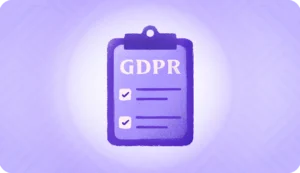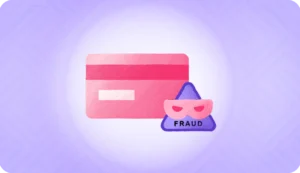The General Data Protection Regulation (GDPR) is a game-changer for businesses globally. Being non-compliant with GDPR has put gaming, financial services, and EdTech companies all over the world to lose 4% of annual turnover or €20 million ($23 million). It is regarded as one of the toughest laws for security and privacy in the world. You must follow the industry regulations and determine how to be GDPR compliant. Being non-compliant can fine you 18 million euros or 4% of global annual turnover and make you lose your entire business.
In this article, we will share the steps for adapting to the GDPR compliance requirements.
What is GDPR?
GDPR compliance in full form is the General Data Protection Regulation, a law made to give people complete control over the personal data they have been sharing on the internet. GDPR safeguards customers and parties involved in data sharing, such as employees and suppliers. Personal data is any information related to a person, such as a name, photo, email address, phone number, social security number, IP address, location, etc.
In the next section, we will define the checklist to be followed for GDPR compliance.
How to be GDPR Compliant?
Depending on your resources and the personal data you are dealing with, it takes time to prepare a sound compliance plan. Here is a 10-step GDPR compliance checklist that your organisation should follow to become fully GDPR compliant:
- Protect the Data that You Have Gathered
You must know the data collected from the users. It can be your name, business name, address, email address, contact number, social security number, and credit card details. It is not possible to control the data flowing through your systems if you do not know it. The GDPR focuses on protecting sensitive data or Personally Identifiable Information (PII) that you store in your systems that must be filtered out into different categories. You must use the best IT security practices to protect this data.
Data protection compliance is important for three reasons. First, you must ask for your user’s consent if the users handed the data to you before the law came into force using email or any other media.
Second, you must give a comprehensive answer if someone asks about the information you have about them.
Third, if the GDPR investigates you, you must be able to control the data you get and keep a list of the collected data.
- Assign a Data Protection Officer
As per GDPR’s Article 37, the controllers and processors of an organisation should appoint a DPO or data protection officer to look after their data protection strategy and handle the personal data. The appointed DPO must know about GDPR best practices and laws.
An organisation should appoint a DPO under one of the following conditions:
- A public authority has been processing the data
- The collected data goes through systematic monitoring
- A large scale data has been processed
A DPO should also abide by the following duties:
- Monitor data for GDPR compliance
- Offer advice and recommendations on the data protection assessments
- Must be a primary point of contact for data processing queries between the organisation and GDPR regulators
- Should understand the potential risks related to different processing operations
- Create a GDPR Diary
A GDPR diary must be created that includes the data sources that help your organisation implement GDPR. This comprehensive diary with all the details must map the data flow in your business and provide compliance during an audit. During data breaches in your organisation in the compliance framework, the GDPR diary shows the progress of data security. The earlier it is implemented, it strengthens an organisation’s IT security and demonstrates its dedication to protecting customer data.
Using a third-party attack surface monitoring solution, an organisation identifies and reverses the data breach vulnerabilities in its vendor network.
- Follow a Standard Security Framework
A standard framework helps your organisation adhere to the GDPR compliance requirements. These frameworks are the pathways for implementing best core practices, which help reduce the risks of privacy and data security. A security framework does not exist for protecting your business. Hence, you must consider multiple frameworks for staying compliant with GDPR. For instance, ISO 27001 is an ISMS framework that reduces the chances of data being at risk. NIST privacy framework helps manage privacy risks, while the NIST cybersecurity framework helps measure risk management and cybersecurity systems maturity.
- Report Security Breaches Instantly
Organisations face data breaches each day. Even with all the security measures in place, there must be an action plan to overcome the data breach that helps the company with minimal losses and getting fined. According to article 33 of the GDPR guideline, there is an immediate security or data breach requirement to be reported by data processors and controllers within 72 hours. They are reported to the supervisory authority, also known as DPA or data protection association, which enforces and monitors GDPR compliance. One of the mandatory GDPR requirements is to notify the data breach immediately.
The action plan systematises the steps taken after data breach detection, including:
- Data Breach Reporting
You must report the breach within 72 hours to the authorities, data subjects, partners, and stakeholders.
- Incident Representation
Represent the different incidents with a step-by-step process covering the legal and regulatory aspects.
- Role Assignment
Assign the roles aptly to the ones who will take charge of the data breach, patch the hole, and ask your security team for further assistance.
The typical hierarchical reporting structure for security breaches is:
- Processors report data breaches to controllers, and controllers report to a supervisory authority.
- A supervisory authority, or a Data Protection Association or DPA, monitors and enforces GDPR compliance.
- Supervisor authorities are located in the EU state of an organisation. The GDPR enables the DPAs to impose non-compliance fines on the controllers and processors.
- Establish Data Governance
Data governance is a collection of policies and processes that ensures proper usage of your data fabricated according to GDPR’s Article 30. It ensures that you are following high standards throughout your data lifecycle. There must be an inventory of data that helps you in finding all the data sources stored by your company. A data classification must be made to ensure your focus on important data first. A strategy must ensure that your data has been collected comprehensibly.
Your customers must be aware of the data collected about them. Data collection acknowledgement must be displayed clearly at every data collection point.
Your Privacy Policy must be up-to-date and always accessible on your website so that all the customers get notified by email whenever an update is made. It should outline the collected data clearly and how it will be used.
Related read: Quick guide to data residency laws
- Verify Your Users’ Age
The GDPR rules say that you can process the users’ data who are at least 16 years old. For people younger than 16 years, you must take consent. Hence, the users’ age should be verified using an age verification process before collecting the data. The data of the under-aged users should be collected with their parent’s consent.
To acknowledge that your subscribers sign up to your email list, you must go for a double opt-in process for every sign-up. Unless the double opt-in is enabled, a person is not added to an email list until their consent is confirmed. The GDPR states that a double opt-in process is highly recommended. With the double opt-in implementation for the new email sign-ups, you are verifying the users’ consent to waive their data, which shows user dedication to the data protection standards on how to be GDPR compliant.
- Administer Proper Control
For safeguarding your customer data, you must use the most up-to-date software and ensure that it is readily available to the customers. Encrypt the data you are sending and storing, and document the scope and nature of data processing. Protect the data from being accessed by unauthorised users and check the efficiency of the security controls using testing considering the risks associated while handling data.
Security control management is an ongoing process for businesses. Companies must audit the data processing activities properly. This ensures the proper working of your security systems. A software solution helps in automating security control management.
- Provide Training to Your Employees
It is important to train your employees if they are considering being compliant with GDPR. For the same purpose, a comprehensive training and communication strategy is needed to succeed, which includes everyone working in your organisation. The training is an ongoing process in your company with a focus on creating a strong security and compliance culture in your organisation.
You can offer your employees online training in the form of courses and training material. You must also ensure that every department understands the risks and responsibilities and that your IT partner is helping you train your employees with the best security practices.
- Perform Security Gap Analysis Regularly
A security gap analysis helps in validating your current security measures. The current security measures must be compared to the industry standards. It helps you understand the steps needed to implement the appropriate controls and processes. It also helps in finding measures for ensuring compliance. Working with a Managed Service Provider helps perform the security gap analysis, as they know the points to be followed. They also give you a set of guidelines or recommendations to be followed to stay compliant. These guidelines can also be implemented to improve the IT security strategy of your organisation.
Final Words
The General Data Protection Regulation (GDPR) creates legislation applying to the entire European Union. Everyone operating in the EU countries must follow GDPR compliance as it is the world’s most strict data protection compliance. Not being compliant with GDPR can impose hefty fines on your business. Hence, you must upgrade your IT security strategy.
This article has covered how to be GDPR compliant, serving as a guideline for laying the foundation in your organisation. Managed Service Providers help you in achieving and maintaining your GDPR compliance. A good MSP provider will help you automate the changes, monitor your network, and upgrade your IT network and security simultaneously. They also ensure that your data and network are protected from attackers.
For more such interesting and informative blogs, check our website!





